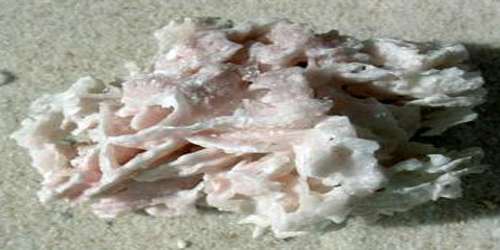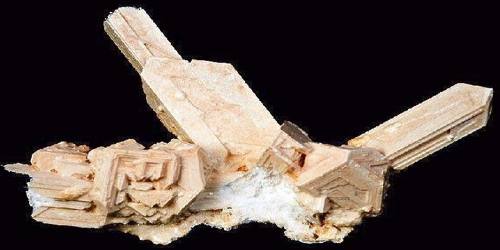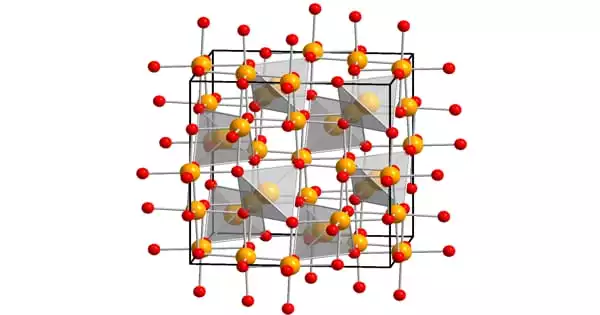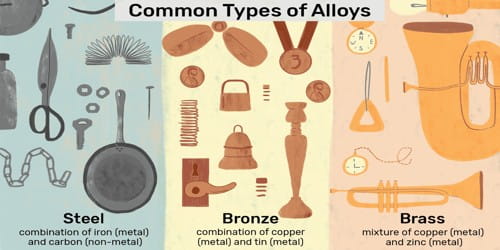Thenardite
Definition
Thenardite is a whitish vitreous mineral that consists of anhydrous sodium sulphate (Na2SO4) and occurs in saline residues. It is similar to Mirabilite, a chemically similar mineral to Thenardite that, unlike Thenardite, contains water in its structure. It has been deposited as an evaporation product near salt lakes and playas, as in the arid regions of northern Africa, Siberia, Canada, and the western United States. It is widespread as efflorescence on arid soil and as a crust in volcanic fumarole deposits.

Thenardite crystallizes in the orthorhombic system and often forms yellowish, reddish to gray white prismatic crystals although usually in massive crust deposits. Thenardite is fluorescent, white in shortwave and yellow-green in longwave UV radiation.
Occurrences and Properties of Thenardite
Thenardite, which is named for the French chemist Louis J. Thenard, has several distinctive properties in addition to its solubility. For one it has a salty taste similar to halite, but the different cleavages and crystal habits make the two minerals quite distinguishable from each other. Thenardite is also generally fluorescent showing a white color in shortwave UV and a yellow-green color in longwave UV. Thenardite also has a distinctive crystal habit in which crystals form a diamond-like shape. The crystals are generally flattened and are sometimes well formed showing good orthorhombic symmetry. Although not often seen in mineral shops, thenardite is now making a presence with well formed crystal clusters mostly coming from Searles Lake, San Bernardino County, California.

Thenardite specimens should be stored in closed containers as thenardite is only metastable. The specimens will gradually absorb water and convert to the mineral mirabilite. In volcanic caves on Mt. Etna, Italy; thenardite is an early secondary mineral forming the cave’s speleothems. But when the temperature of the cave lowers and the humidity rises, the thenardite coverts to mirabilite.
Mirabilite is an unstable mineral, and will dehydrate and lose its water when exposed to air, thereby changing to Thenardite. These altered specimens are in fact Thenardite pseudomorphs after Mirabilite. Some of these crystals, especially those of outstanding crystal form, are artificially grown as by-products of borax mining operations.
Thenardite as intergrown clusters of distorted crystals, oftenbipyramidal in shape. Individual crystals, which are rare, are tabular and short prismatic. Sometimes in well-formed twinned crystals that bisect each other. Also massive, grainy, encrusting, and in coral-like masses. Its Crystal Habits include tabular, dipyramidal, flattened, diamond-shaped crystals; often intergrown. Twins form arrowhead like crystals and crossed interpenetration twins. Also as crusts, granular and as massive rock forming beds.
Reference:
















